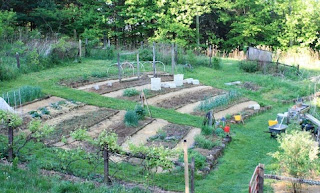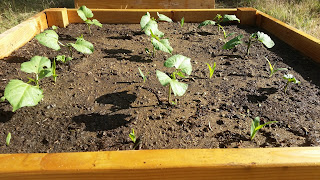Growing a Garden on a Hill Part 1 Posted on 8 Oct 09:08 , 1 comment
This is going to be a fun series! My sister and her family are moving to a new house and she asked me about growing a garden on a hill. The new house has a pretty decent slope to it. Rather than just send her a few links I thought I would make an email series out of it so that our readers and customers can benefit from our research.The first steps to planting a sloping area are to evaluate the pitch and runoff. If the pitch is more than 30 degrees, it might be a good idea to terrace the area to prevent topsoil from eroding and all moisture evacuating every time you water or it rains. Once you have solved any moisture retention and erosion problems, it is time to evaluate the site further for exposure and zone, and plan what plants grow on slopes.
 |
| source |
The top of a hillside will not only be warmer but drier than the bottom, so keep this in mind when selecting the placement of vegetables in the hillside garden. For instance, moisture-loving plants thrive best near the bottom of the slope. For best success, the vegetable garden should be located on a south or southeastern slope. South-facing slopes are warmer and less subject to damaging frosts.
 |
| source |
The best solution for hillsides is to plant your vegetables across the slope using contour rows, terraces, or raised beds. This not only makes it easier for you but also prevents problems with erosion.
Prepare the planting bed like you would in a traditional garden, starting first with removing all weeds and debris. Because hill settings are more susceptible to erosion, improve soil structure by mixing in 2 to 3 inches of compost into the soil.
WHAT you plant on a hill won't be much different than what you would plant on flat ground, you just have to plan accordingly. It will take a bit more prep than just planting seeds but well worth the effort.
I've seen the hillside garden my sister was referring to and it's a steep slope but it has levels to it. Bonus, there are already a few raised beds on the property as well as fruit trees. Part 2 will include pics of the garden and how we'll manage planting for FALL.
Wondering what to do about soil and nutrients? We have you covered!
HELPFUL LINKS
As always, if you have additional questions or concerns we are happy to help. Please email
mary@marysheirloomseeds.com
mary@marysheirloomseeds.com
with your questions.
Sign up for our E-Newsletter

